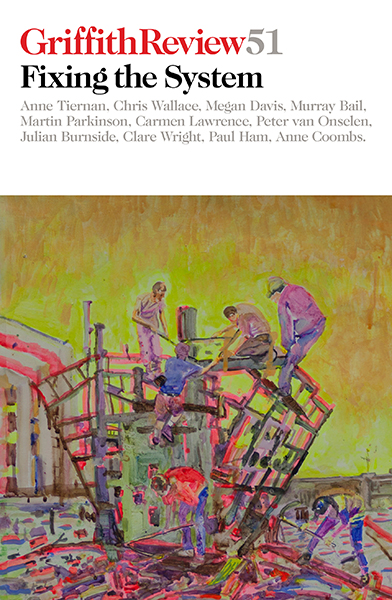Featured in

- Published 20160202
- ISBN: 978-1-925240-80-1
- Extent: 264pp
- Paperback (234 x 153mm), eBook


Already a subscriber? Sign in here
If you are an educator or student wishing to access content for study purposes please contact us at griffithreview@griffith.edu.au
Share article
About the author

Andrew Fowler
Andrew Fowler is the author of The War on Journalism (William Heinmann Australia, 2015), and The Most Dangerous Man in the World (Melbourne University...
More from this edition

The failure of law and order
Reportage‘TWO-MINUTE NOODLES!’ Lee is leaning forward on the edge of her sofa, animated. She’d recently visited an old jail-mate who was still in the...

The good old days
EssayOver the last thirty years I have sought to explore how our top political executives exercised their power, whether they were prime ministers, ministers or departmental secretaries. My books include a study of the ways that the Australian Cabinets have changed over the past hundred and fifteen years, and two books on particular prime ministers, one from each side of the political divide. My interest has always been on how they do the job, how they define their responsibilities, what being prime minister means. Perhaps inevitably, when current circumstances are compared to, and placed in the context of, past leaders, it is the continuities rather than the differences that strike me as the most significant.

I n t e r e s t i n g
FictionNOT MANY PEOPLE like me. I have no friends. And I would like to know why. People begin friendly enough, at least not unfriendly,...